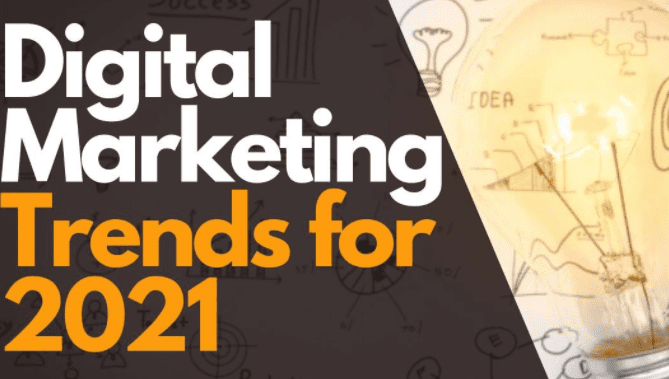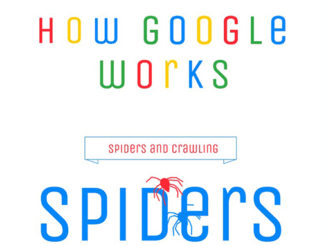
![]()
The ongoing COVID-19 pandemic has upended how businesses operate. We’ve seen more products and services move online and many employees will continue to work remotely or in a hybrid setting for much of next year. Months of varied customer responses to COVID-19 have given us some insights into the marketing trends that are working in this new normal and what you can expect in 2021.
What are the key digital marketing trends for 2021 that your business needs to consider to engage and retain current customers and generate more traffic, leads, and revenue? We’ve identified eight areas where savvy managers should invest their time and resources next year. If you don’t know where to start, start here — because these eight industry trends might prove the best bang for your business’s marketing buck.
1. Social Media To Engage & Retain
Organizations should be prepared to dedicate more resources to social media marketing in 2021. Social Media Budgets accounted for 24% of total US marketing budgets during Q2 of 2020, up from 13% last winter. During the COVID-19 pandemic, marketers are increasingly making customer retention a priority. This will continue well into 2021. The pandemic has dramatically increased the amount of time people spend online which includes how they research products, brands, and organizations.
This consumer shift creates new opportunities for marketers to increase their reach with new audiences and re-engage with long-time customers. For only a few hundred dollars a month, a good social media marketer can develop a content plan, make regular posts, monitor and drive customer responses, and attract new business. If your small business has been putting off adding social media services to your marketing mix, now’s the time.
2. All-in on Google Listings and Local SEO
If you own a small business, THE most important things you can do is ensure your local listings are verified and kept current on various search platforms. That’s because for B2C businesses that draw customers primarily on a local level (think dentist office or car dealership), the Google My Business listing provides valuable information about your hours (many of which are in constant flux due to COVID-19), services, and geographical location. It’s one of the key factors in search and business owners are often blown away to learn how many directories there are out there.
One tip to implement today: ensure you have a geographically-defined service area within your local listings as this will help your business show up in “near me” searches. That’s because many search engines (especially Google) prioritize relevance in their search algorithms. It may seem counter-intuitive to limit your business service radius, but by doing so you’ll more deeply penetrate that market in search results. Keeping your listings updated also allows your customers to know of any changes in your hours, promotions, blogs, or any other information you would like to quickly convey.
3. Improved Communication of Availability
According to McKinsey, the availability of products and services is the number one reason customers are switching their brand allegiance right now. Marketers can meet this challenge in a few ways. The most obvious (if most difficult) solution is to increase the days of inventory on-hand of products or the availability of time-slots for services. Get creative. For example, with more people working from home and many kids learning remotely, most physicians and dental offices with whom we work have reallocated staff toward more daytime slots and fewer night and weekend hours.
If adjusting stock levels or servicing hours is a challenge (or worse), timely communication becomes paramount. Be clear about what you can and can’t do and set reasonable expectations. For high-volume items, consider placing a banner on your site to indicate when key products will be in-stock. If you aren’t collecting customer contact information, now is the perfect time to create a subscriber list so that you can be proactive with notifying customers of availability changes with an automated text or email.
4. Automated Bidding in Google Ads
Speaking of automated… Google Ads marketers constantly tweak and adjust campaigns, keywords, and bids to get the most for your advertising dollars. The problem is all of the tweaking comes at a cost: more hours, and higher management fees. Enter Automated bidding, which allows Google to automate prior moves to adjust your bid in real-time.
Now, automated bidding isn’t new, having made its debut way back in 2016. But continuous improvements, especially in the past year, mean that it’s due to break-out in 2021. Our increased reliance on automated bidding tactics means that we can devote our time to optimize other aspects of PPC performance, which ultimately delivers a better outcome at a lower cost to our clients.
5. The Power of Voice Search
Voice search is currently not a part of Google’s algorithm; however, it is still dictating current search results. Voice search queries often yield different results than if the user had typed in a text-based search. For SEO, it’s a good idea for businesses to be on their toes with voice search components for their consumers who are adapting and switching over to that medium.
According to experts in voice search, content must be specifically optimized for voice. It needs to be more direct and conversational so that it will accurately sync with search queries. This will help boost traffic by staying relevant and more visible to consumers. New to voice search? Don’t worry, we’ve got you covered. Check out our more in-depth explanation of The Power of Voice Search.
6. Improved Retention via Segmentation
Because it takes less money to keep your existing customers than earn new ones, marketing experts always recommend exerting more effort into later stages of the buyer’s journey. Happy customers tend to tell their friends and provide referrals to help increase revenue. They’re also more likely to give your direct and honest feedback about issues that will only strengthen your brand.
Be sure to keep them informed on your organizational changes or processes that would impact your relationship through email marketing or engage with them on social media. By collecting data and segmenting your customers, you have an opportunity to save costs while delivering on your products and services. You can also target them in a more cost-effective fashion, allowing you to stretch your marketing dollars even farther.
7. More Interactive Content
Adding interactive elements to your website or social media is a great way to provide value for visitors, get them to engage with your brand, and learn more about them. For example, suppose you are a realtor and add a simple but effective mortgage calculator to your website. You’re now offering value to your visitors while also learning more about them based on the data that they enter into the calculator. This info, in turn, can help you refine your personas and offer-targeting.
Other examples of interactive marketing includes assessments, quizzes, games, polls, interactive videos, surveys, and contests. Contests are a great way to exponentially increase your reach and visibility, quickly. The fastest way to get your brand in front of lots of new prospects, cheaply, is to have your current customers share a Facebook post of a contest. Many of our clients take it a step further and make it a referral contest, often promising an attractive reward to the client who helps bring in the most new business.
8. Focus on Employee Engagement
HR professionals recognized early on that the COVID-19 pandemic would impact employees and productivity. For many, this was the first time they’ve ever worked remotely and the experience may have been both existing and liberating. But by now, the thrill has worn off for most. Add in distractions from children and the stress of dealing with the world around them, and it’s no wonder employee morale is suffering, and productivity along with it.
It’s critical to keep employees connected, as motivated employees will communicate better with each other and ensure better client outcomes. As a manager or business owner, it’s your responsibility to make sure your customer facing teams (service, marketing & sales) understand that even though you may not be in the office, you’re still all working together toward the same common goal. Break down projects into sizable chunks and set clear milestones. Then, ensure that you set-up multiple communication channels and be prepared to share successes with the entire team on each channel.
Where Do You Go From Here?
While these digital marketing trends don’t represent a complete list, there’re a great place to start when planning your 2021 marketing strategy. Taken in concert, most CMO’s and marketing managers could improve their chances just by shifting more resources to social media and local search, adding more personalized and interactive content, and improving the engagement within their customer-facing teams.
These eight key trends can help you increase your site traffic, generate more leads, and grow sales, all while retaining your hard-earned customer-base. They are also critical to help you understand digital marketing trends and how they will impact the larger competitive landscape.



